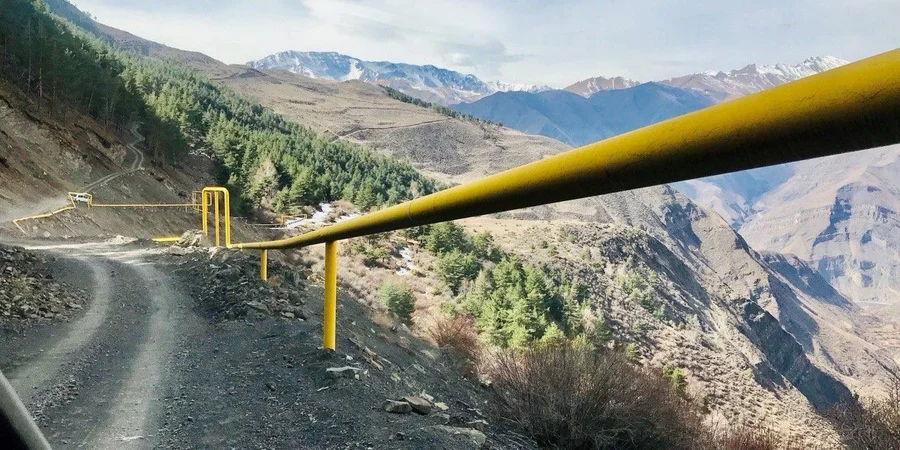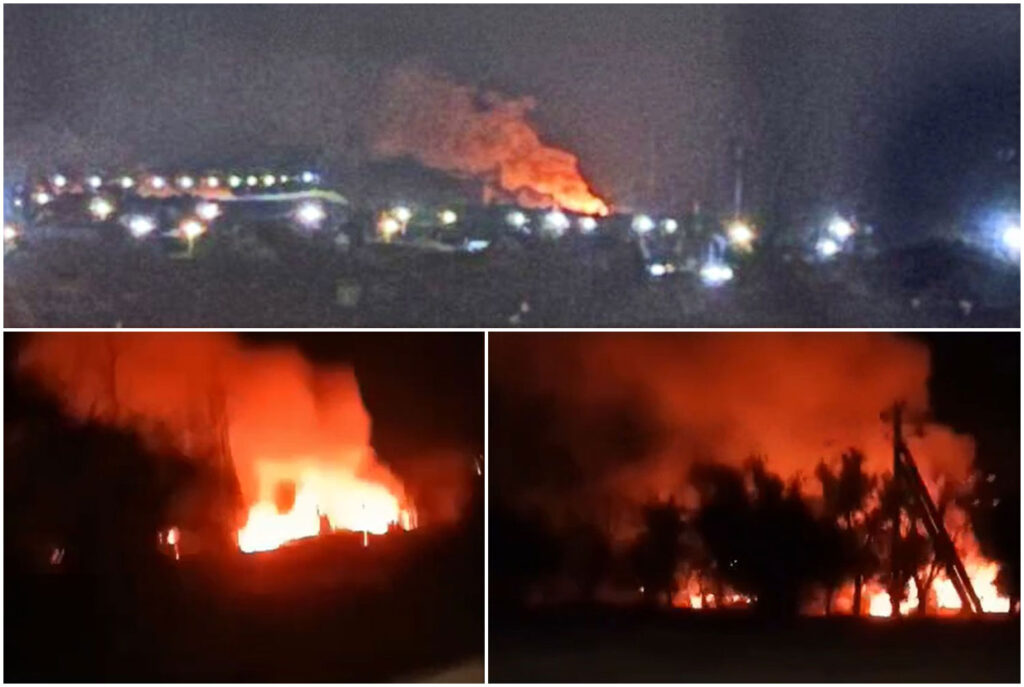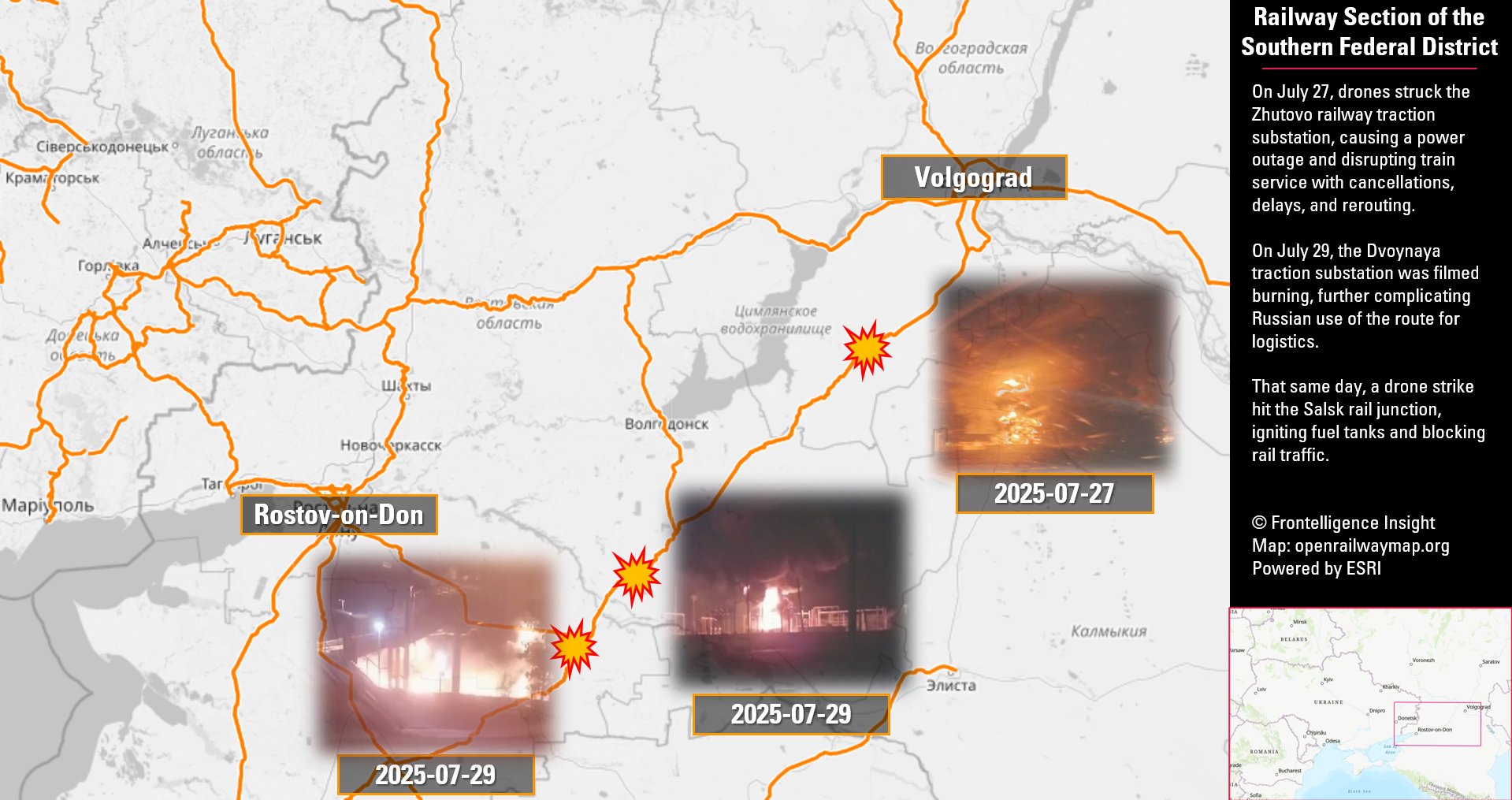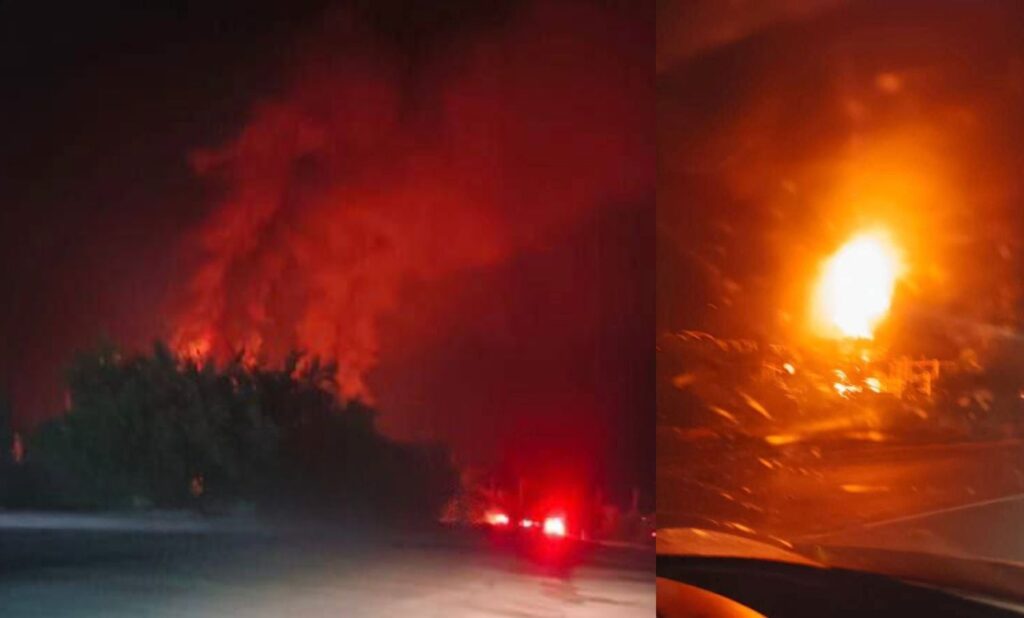Rosneft’s southern oil hub on fire: drones set Russia’s Adler depot ablaze overnight

Adler oil depot burned after Ukrainian drones struck overnight, igniting a 2,000 cubic meter fuel tank near Sochi, southern Russia, around 530 km from the frontline. The strike forced a halt to flights at Sochi airport while emergency crews worked through the night to contain the blaze. The attack targeted Rosneft’s Kubannefteproduct oil depot on Aviatsionnaya Street in Adler, right next to the airport.
The oil depot includes 41 tanks with a combined capacity of around 31,200 cubic meters.
Ukrainian drones strike Adler oil depot again
In the early hours of 3 August, Ukrainian strike drones hit the Adler district of Sochi in Krasnodar Krai. Telegram channels Astra and Exilenova+ reported that the drones struck the Rosneft-Kubannefteproduct oil depot, causing a powerful fire. Local authorities confirmed the fire and the suspension of flights. The depot sits not far from the Sochi airport, which led to an immediate halt to flight operations.
Mayor Andrii Proshunin of Sochi, Krasnodar Krai Governor Veniamin Kondratiev, and Russia’s Ministry of Emergency Situations confirmed a drone attack on the depot, and the fire. They claimed that falling debris from destroyed drones caused a single tank to ignite. Footage from the site, however, shows two ignition points at the facility.
The Ministry of Emergency Situations said the fire broke out in a fuel tank with a volume of 2,000 cubic meters. They also claimed that debris from drones damaged five garages in a cooperative and a shop, which also caught fire. Governor Mikhail Kotyukov said,
“In Adler district, drone debris hit a fuel tank, causing a blaze. 127 personnel and 35 units of equipment have been deployed to eliminate the consequences of the fire.”
Flights disrupted at Sochi airport
The strike forced the closure of Sochi airport for more than two hours overnight. Airport services later announced that disruptions would continue for at least a day.
“Together with airlines, we are doing everything possible to stabilize the regular schedule as soon as possible, but it will take 1–2 days,” airport representatives said.
Drones reach Voronezh and other areas
On the same night, drones also targeted other areas. Governor Aleksandr Gusev of Voronezh Oblast claimed that 15 drones were downed over Voronezh city and Liskinsky district. Russian officials said debris from drones caused fires and damaged single-family homes. Explosions and fires were reported across Voronezh.
Exilenova+ reported that the activity of electronic warfare systems led to several dorne crashes and fires across Voronezh.
A separate fire was reported at the Kstovo oil depot in Nizhny Novgorod Oblast after a drone threat was announced in the area, though it remains unclear whether that was a result of a Ukrainian strike.
Second strike on Adler oil depots in weeks
This attack marks the second major strike on oil infrastructure in Adler in recent weeks. On 24 July 2025, Ukrainian drones struck the Lukoil-Yugnefteproduct depot, which likely supplies Sochi International Airport. That strike caused a large fire at the site.
Drone attacks on 2 August across Russia
The Adler oil depot follows a wave of Ukrainian drone attacks on 2 August across Russian territory.
- On that day, drones attacked oil refineries in Ryazan and Samara Oblast’s Novokuybyshevsk.
- Ukrainian sources confirmed that earlier attacks on Penza damaged the Elektropibor and Radiozavod plants, which produce radio-electronic equipment for the Russian armed forces.
- Ukrainian drones also struck a radar complex for monitoring space objects near Feodosia in Russian-occupied Crimea.
- The same day, drones attacked the Likhaya-Zamchalovo railway power substation in Rostov Oblast, which Russia uses to supply its occupying forces in Ukraine, and an airfield in Prymorsko-Akhtarsk that launches Shahed drones.
- Separately, on 2 August, an explosion occurred on the Central Asia–Center gas pipeline in Volgograd Oblast near the village of Dynamivske in Nekhaivsky district. The blast disabled the pipeline, and gas transit was stopped indefinitely, according to Militarnyi, citing sources in special services.




